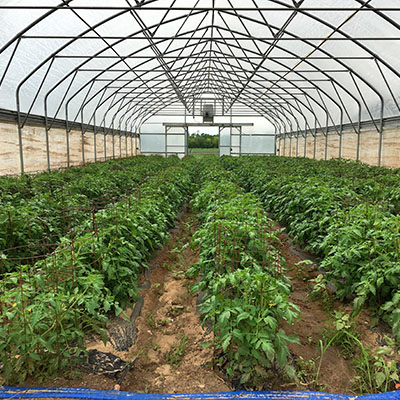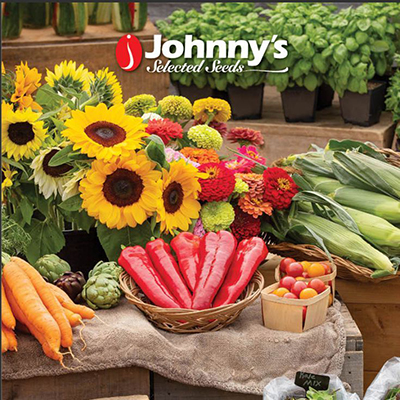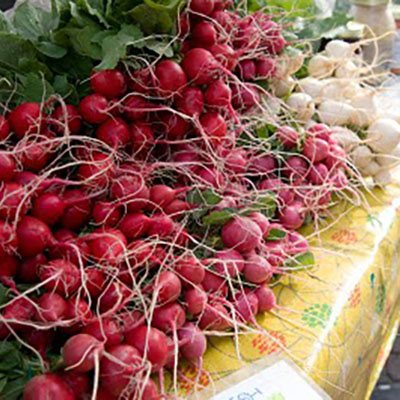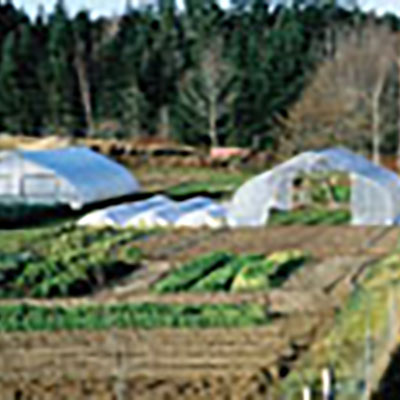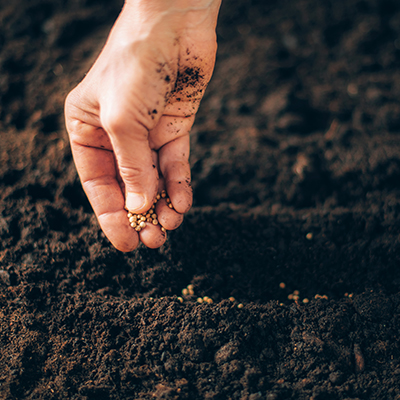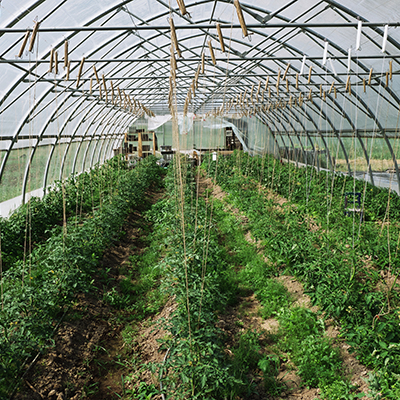Growing for Market in partnership with Johnny's Selected Seeds has created a library of expert information about growing and selling vegetables and flowers. Links in the article will take you to johnnyseeds.com.
Subscribe to Growing for Market for more great ideas about growing and marketing!
For more topics in the series, click on Market Farming Basics in the left column.

Extend Your Growing Season with Protected Cultivation Methods
July is a good time to start planning for season extension, whether that means buying a new hoophouse or replacing worn-out row cover and frost fabric. Here are some ideas that can help you make fall and winter as profitable and productive as summer.
 If
you can provide shade and moisture, you can get many cool-weather crops
started in the heat of summer. Beets, carrots, chard, lettuce, onions,
radishes, and turnips will actually germinate at soil temperatures of
85-95F (30º-35ºC), though they prefer it about 10º cooler. Escarole,
endive, kale and kohlrabi won't germinate above 80ºF (27ºC), and spinach
won't germinate above 75ºF (24ºC). To lower soil temperature, consider
erecting hoops covered with shade cloth. Johnny's sells a knitted shade cloth that provides good ventilation when held above crops on Quick Hoops™. Sizes are available to perfectly fit Quick Hoops™ low tunnels or high tunnels.
Soil should be watered thoroughly after putting on the shade cloth and
before planting to give the soil a few days to cool off. Fall crops need
ample moisture to get them started in summer; use drip irrigation and
turn it on every day to keep the top few inches of soil moist.
If
you can provide shade and moisture, you can get many cool-weather crops
started in the heat of summer. Beets, carrots, chard, lettuce, onions,
radishes, and turnips will actually germinate at soil temperatures of
85-95F (30º-35ºC), though they prefer it about 10º cooler. Escarole,
endive, kale and kohlrabi won't germinate above 80ºF (27ºC), and spinach
won't germinate above 75ºF (24ºC). To lower soil temperature, consider
erecting hoops covered with shade cloth. Johnny's sells a knitted shade cloth that provides good ventilation when held above crops on Quick Hoops™. Sizes are available to perfectly fit Quick Hoops™ low tunnels or high tunnels.
Soil should be watered thoroughly after putting on the shade cloth and
before planting to give the soil a few days to cool off. Fall crops need
ample moisture to get them started in summer; use drip irrigation and
turn it on every day to keep the top few inches of soil moist.
Be prepared for unexpected frosts as the weather cools. Johnny's row covers are available in a number of weights and sizes to provide exactly the protection you need on fall crops. A wide piece of heavy row cover can be pulled over multiple beds quickly when a heavy frost threatens. Row covers also can be used on hoops to create a protected microclimate all fall. The Quick Hoops™ bender makes perfect hoops from locally available electrical conduit, and Snap Clamps make it easy to attach row cover or poly for tight, stable low tunnels. Hoop Loops are pre-formed wire hoops with loops that allow you to secure twine down the length of the bed. When covered with row cover, the hoops and twine create a mini-greenhouse that prevents the covering from abrading plants.
In September, plant in the hoophouse. You have plenty of time to get one or more crops of beets, broccoli, cabbage, Chinese cabbage, endive and escarole, greens, kale and collards, kohlrabi, lettuce, radishes, spinach, and turnips. Plant growth will slow as the days get shorter, but the cooler weather of fall will keep crops healthy. Plant enough that you can harvest for many weeks.
Carrots can be planted for harvest all winter, in a hoophouse or low tunnel. Carrots will grow to maturity in fall but can be left in the ground to harvest as needed and they will get sweeter and more flavorful from in-ground storage. Spinach will continue to grow most of the winter, so young leaves can be picked repeatedly.
Plant a crop of overwintering spinach in low tunnels covered with row cover in fall and poly in winter. Seed spinach before the first frost and the plants will reach 3-4 inches in diameter before winter cold stops their growth. They will resume growth in late winter and be a month earlier than spring-sown spinach.Visit Johnny's Selected Seeds for more free information about growing produce, herbs, cover crops and flowers.
Subscribe to Growing for Market for the latest news and ideas.
Reprinted from JSS Advantage July 2011

